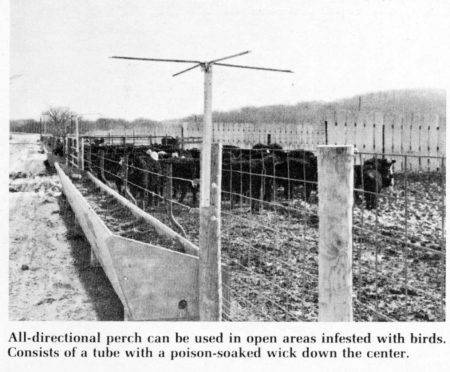
One of the best methods we know of for getting rid of pest birds in buildings or feedlots is the Rid-A-Bird system, manufactured by Rid-A-Bird, Inc. of Muscatine, Iowa. Perches, coated with poison, are placed strategically where pest birds are a problem. They're weatherproof and can be placed either outdoors or indoors.
Birds land on the poison-coated perches and the poison lodges in the cracks in their feet.
"There are only three species of birds that are classed as pest birds and can be eliminated," said Robert D. Bosch, president of Rid-A-Bird. "Those are starlings, English sparrows and pigeons. These birds are a leading cause of disease and death in livestock because they are often contaminated with insects or diseases of their own." Bosch says it's important to analyze the natural habits of the birds, observing how they enter the building and what flyways or flight paths they use through the buildings.
There are different perches for different birds. For example, the pigeon perch is flat because pigeons like to walk back and forth on it, whereas sparrows and starlings hop and fly and prefer a rounded surface.
Rid-A-Bird has patents on seven varieties of bird-repelling perches. The most widely used perch for sparrows and starlings is a metal tube about 1/2 in. in dia. and 30 in. long. A wick is run through the tube and a toxic substance poured into tiny holes across the top of the tube.
Two ounces of repellent are applied to each perch twice a year. Each perch includes the appropriate mounting gear for installation.
Bosch says most infested buildings will be "bird free" six weeks after treatment is begun with Rid-A-Bird. He said there may be a few dead birds inside the building but most will die several miles away the day after receiving the application.
